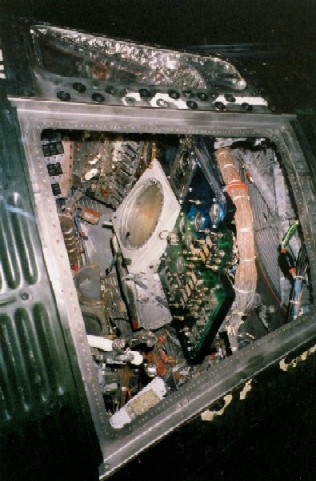
Inside Liberty Bell 7, Gus Grissom's Mercury capsule. This capsule was lost at sea in 1961, recovered in 1999, and is shown on display in 2000 at the Visitor Center at Kennedy Space Center.
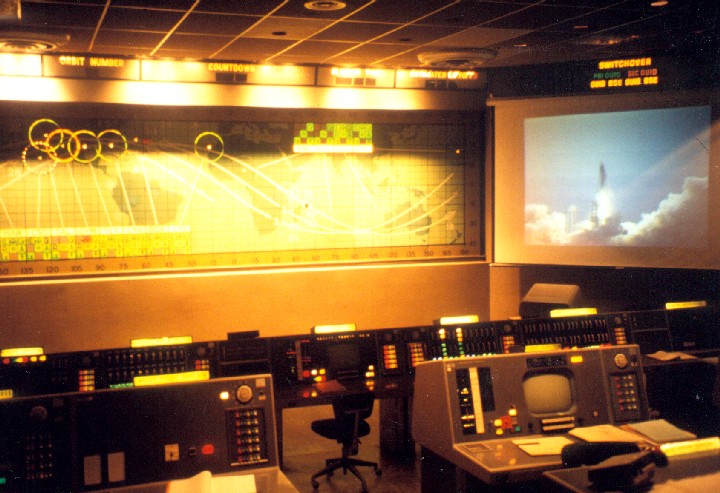
The old mission-control center
at Cape Canaveral, from which the Mercury missions were controlled in
1961-1963. Since this picture was taken in 1995, this room was dismantled
and moved to the Visitor Center at Kennedy Space Center.
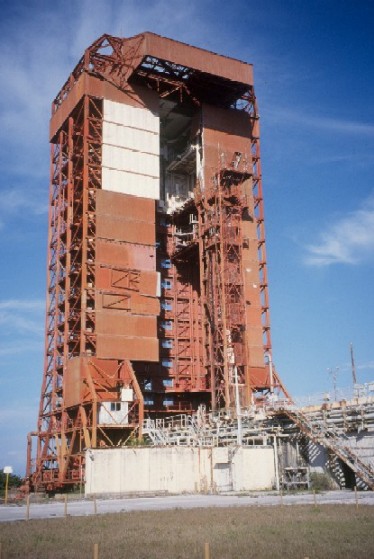
Pad 13 at Cape Canaveral, from
which the Lunar Orbiter spacecraft were launched in 1966-67. This gantry is
the only one at the Cape from the 1960s that was still standing when this
photo was taken in 1999: all the others had been demolished for scrap in the
1970s.
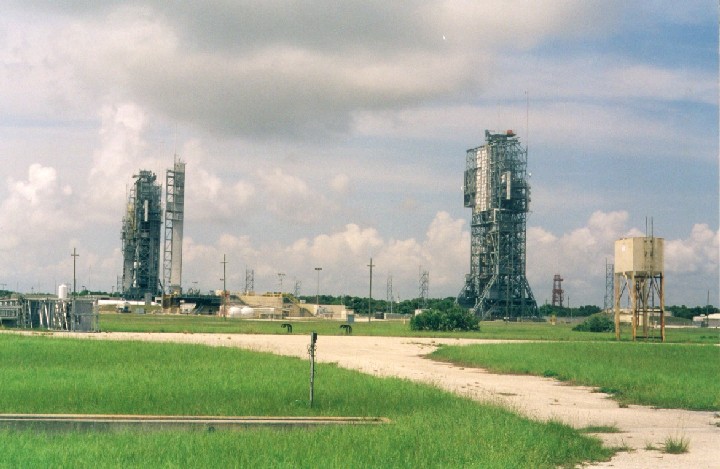
Pad 18 at Cape Canaveral, the site of
Vanguard 1, America's first attempted satellite launch, in December 1957. As
of 2000, when this photo was taken, there was no historical marker, but then
it was a national humiliation, since the booster exploded spectacularly on
the pad. In the background are Pads 17A (right) and 17B (left), where Delta
rockets still launched spacecraft when this photo was taken.
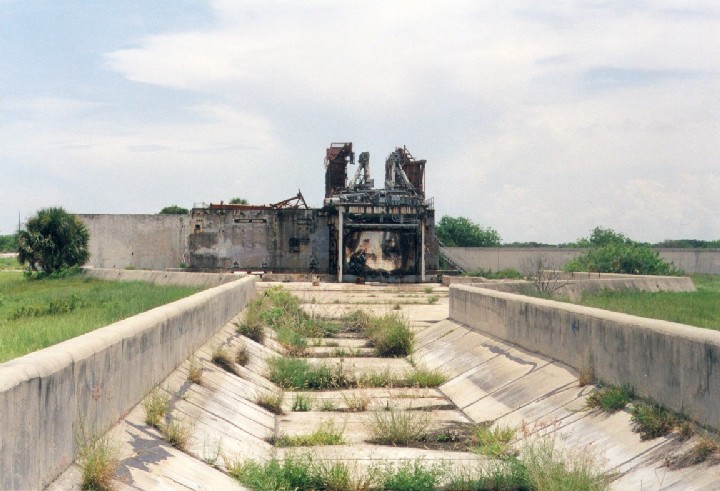
The remains of Pad 19 at Cape Canaveral,
where all ten piloted Gemini-Titan spacecraft were launched in 1965-66. It
had long been dismantled by the time this photo was taken in 2000.
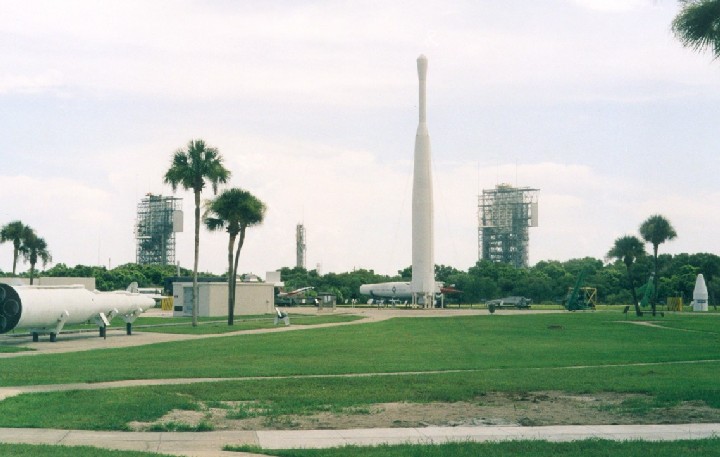
Pad 26A at Cape Canaveral, from which
America's first orbiting satellite, Explorer 1 was launched on January
31, 1958. The white rocket with the bulbous nose, a Thor, marks the
spot. In the background is Space Launch Complex 17, where most
spacecraft to Mars in the 1990s-2000s were launched.
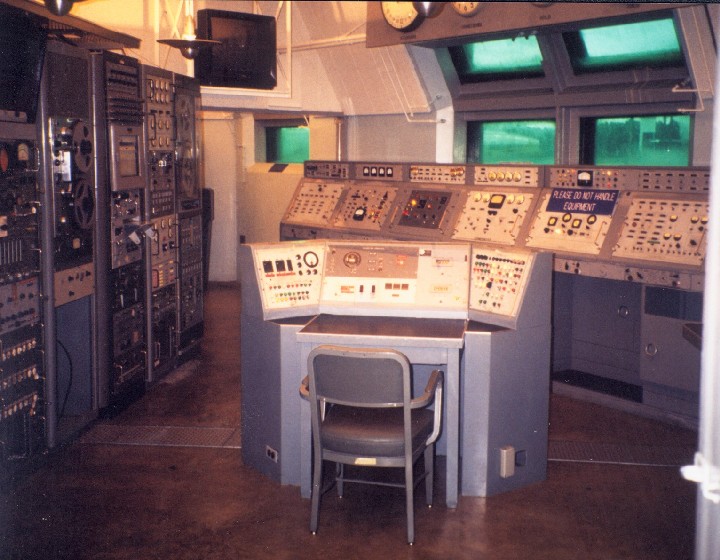
The blockhouse for Pad 26A
at Cape Canaveral, from which America's first orbiting satellite, Explorer 1
was launched by Wernher von Braun's team in 1958.
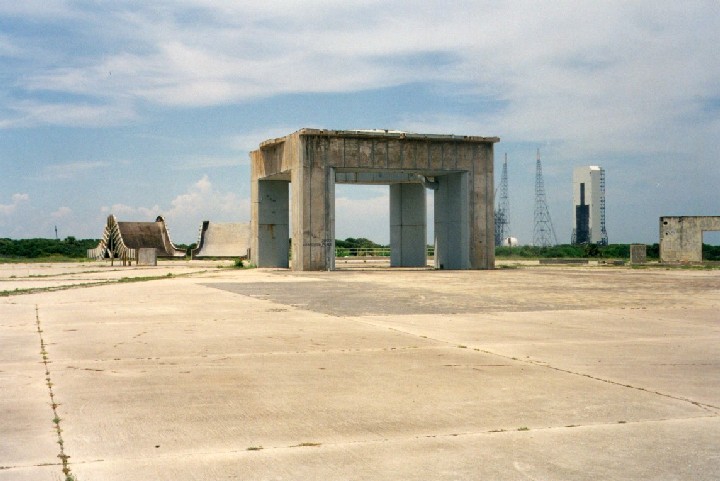
Pad 34 on Cape Canaveral, the site of the Apollo
1 fire, on January 27, 1967. At a peaceful place near the ocean, it is now
a fitting memorial to the three astronauts who died there, Virgil I. "Gus"
Grisson, Edward H. White II, and Roger B. Chaffee. In October 1968, Apollo 7
was launched from this pad. In the background is Space Launch Comlex 37,
now refurbished for Delta IV rockets.
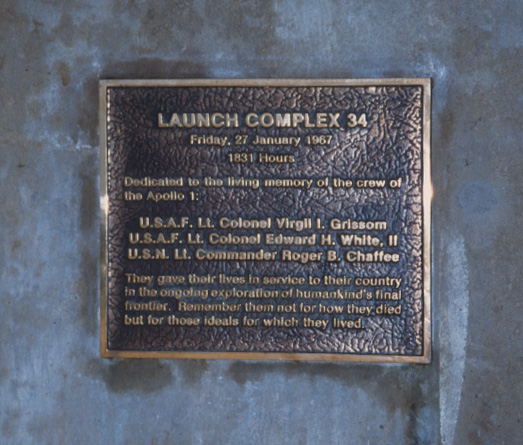
The plaque on Pad 34 on Cape Canaveral,
commemorating the Apollo 1 fire.
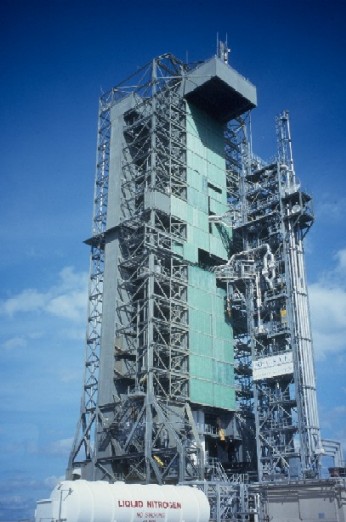
Pad 36A at Cape Canaveral, from which
Atlas missiles launched military, commercial, and scientific spacecraft,
including the SOHO solar observatory. It was retired since this photo was
taken in 2000.
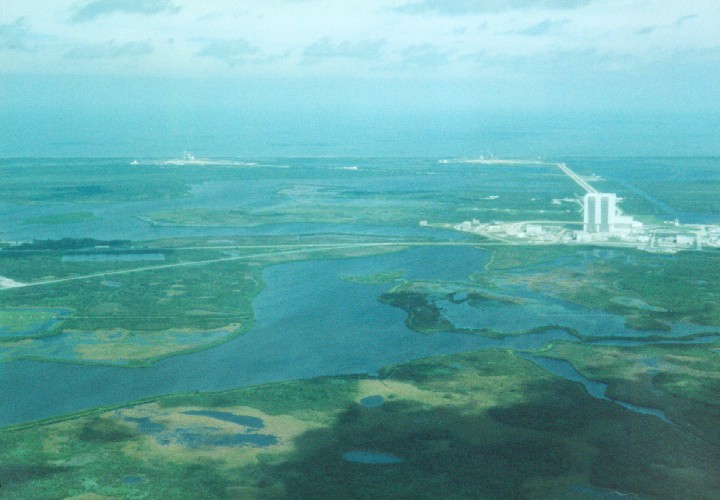
Aerial view of Launch Complex 39,
Kennedy Space Center, built to launch Saturn V rockets to the Moon, and
later used for launching Space Shuttles. The large building in the
foreground is the VAB (Vehicle Assembly Building), where the large rockets
are assembled. At left rear is Pad 39B; at right rear, behind the VAB, is
Pad 39A, where Apollo 8 and Apollo 11 were launched. Pad 39A is over 3 miles
from the VAB.
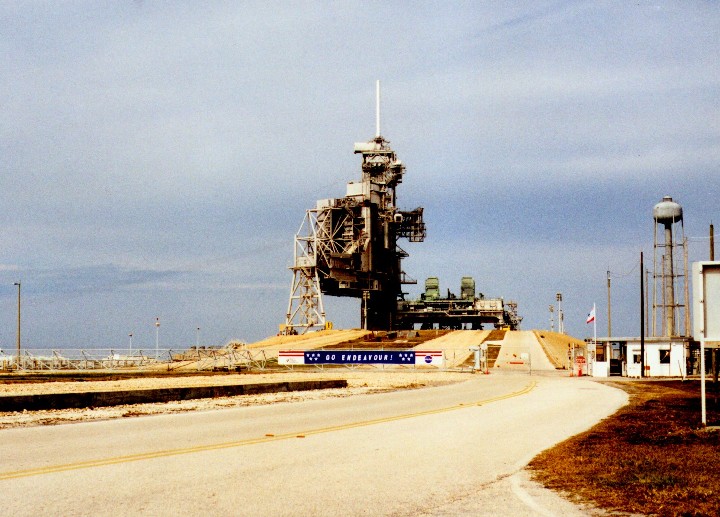
Pad 39A, Kennedy Space Center, on
Merritt Island. From this pad were launched Apollo 8 (the first mission in
which astronauts orbited the Moon) and Apollo 11 (the first human lunar
landing), as well as the first 25 Space Shuttle missions. It was
photographed in 2000, the day after the launch of the Space Shuttle
Endeavour for
mission STS-99: the banner is still hanging.
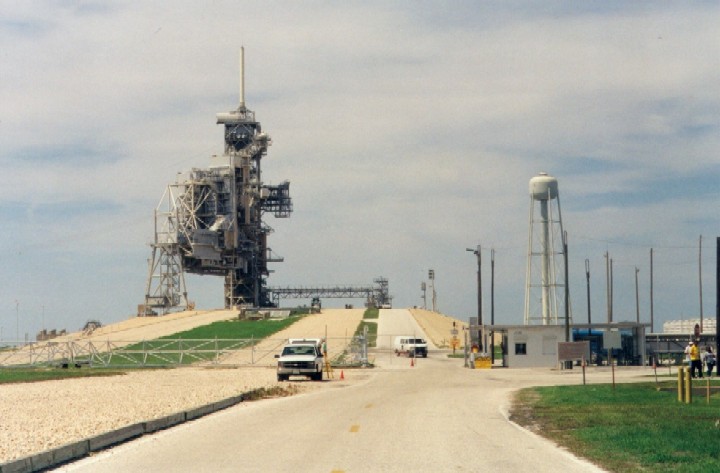
Pad 39B, Kennedy Space Center, on Merritt
Island. This pad was built to launch Saturn V rockets to the Moon, and
was later used for Space Shuttles.
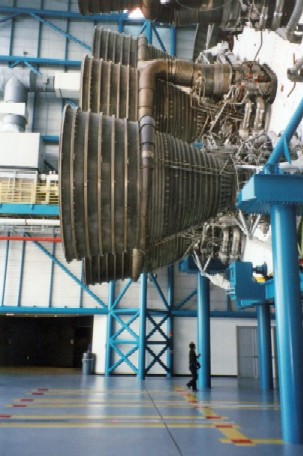
The F-1 engines of the Saturn V rocket,
the most powerful machines ever built, on display at the Apollo/Saturn V
Center, Kennedy Space Center. They are over 17 feet in diameter, and were
capable of 1.5 million pounds of thrust each.

The "Rocket Garden," one of Planet
Earth's finest collections of space launch vehicles on display, at the
Visitor Center at Kennedy Space Center.
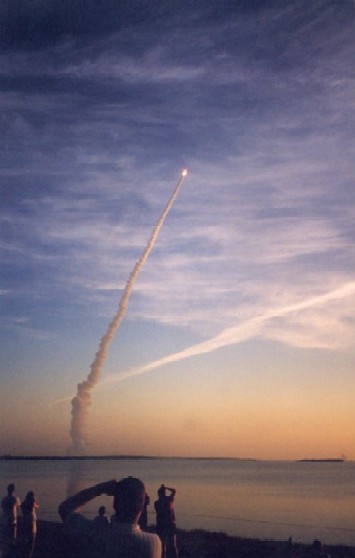
About two minutes after liftoff during the
launch of the Space Shuttle Discovery on mission STS 96 to the International
Space Station, May 27, 1999. The launch was just before sunrise.
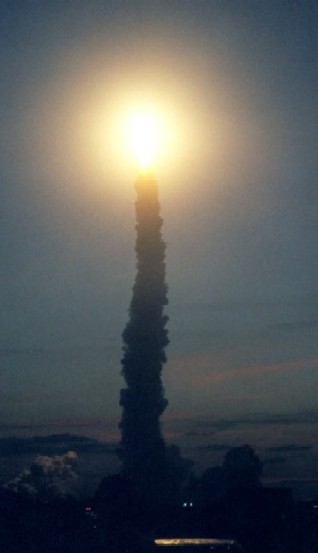
The Space Shuttle Atlantis, on mission
STS 101 to the International Space Station, May 19, 2000, a few seconds
after liftoff. The launch was just before dawn, and the light from the
engines is overpowering the light of the not-yet-risen Sun, making the sky
look black to the camera (and the eye).
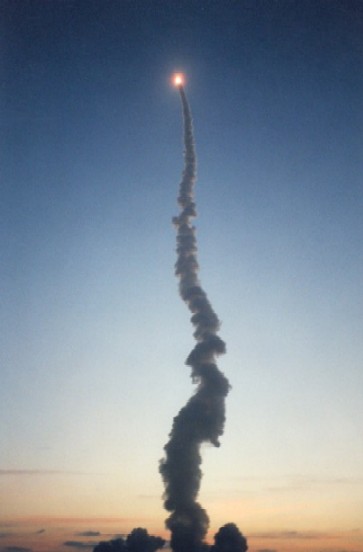
The Space Shuttle Atlantis, on mission
STS 101 to the International Space Station, May 19, 2000, about one minute
after liftoff.
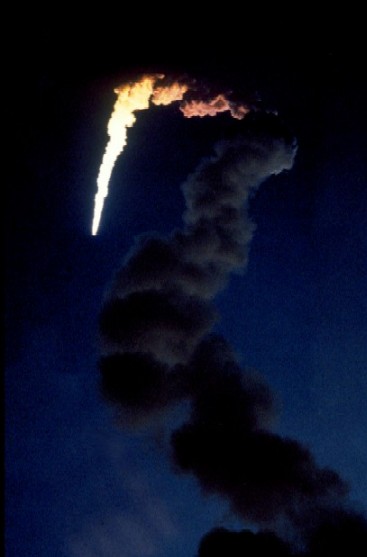
The Space Shuttle Atlantis, on mission
STS 101 to the International Space Station, May 19, 2000, about two minutes
after liftoff. The colors in the contrail are from the Shuttle rising into
the light of the rising Sun, just over the horizon.
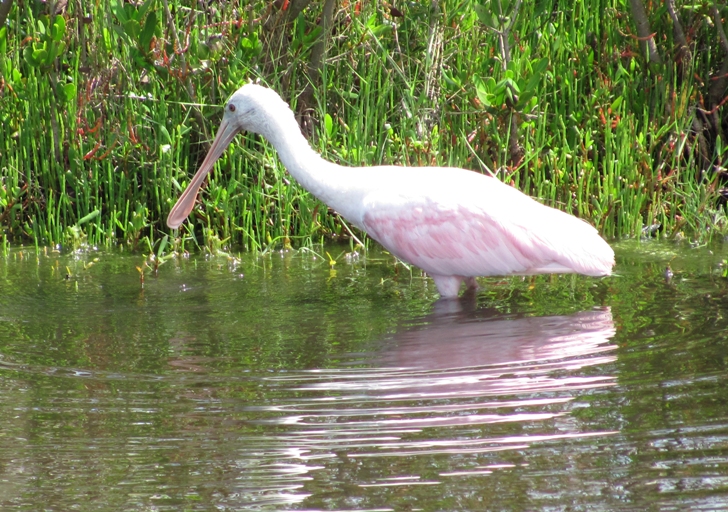
A spoonbill, in Canaveral National
Seashore wildlife refuge.

Why did the alligator cross the road? To get
to the other side! This was taken about 3 miles north of the KSC north
gate.